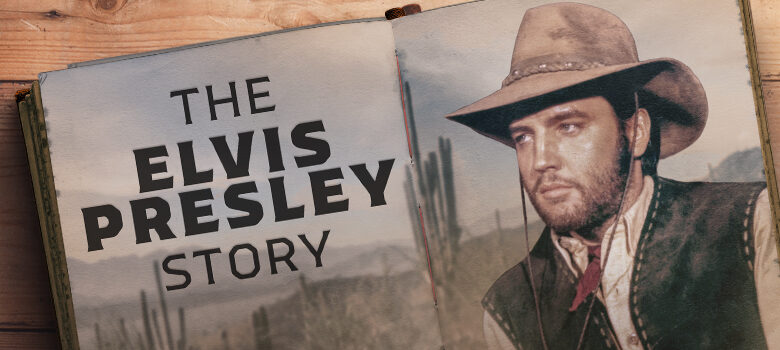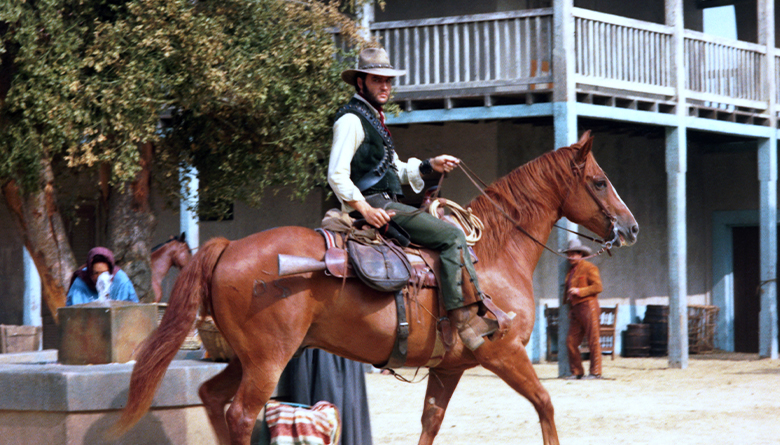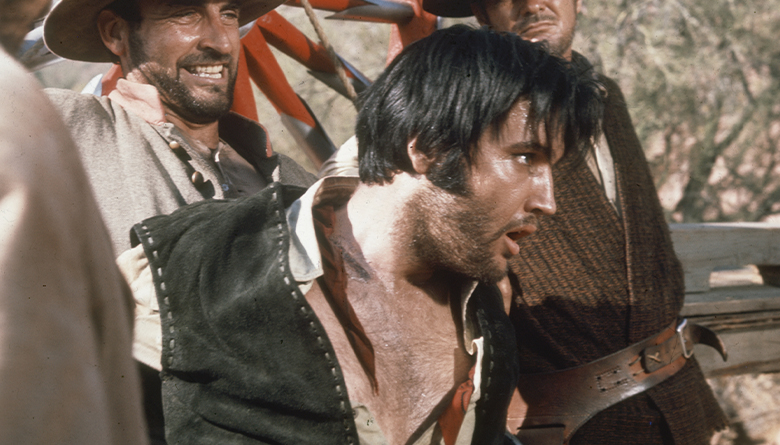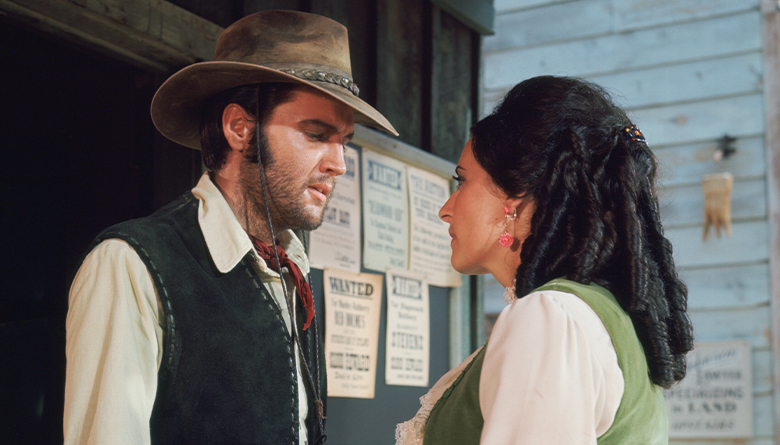The King of Rock and Roll! Elvis Presley: His life, loves, and career.

For three incredible decades, Elvis Presley electrified audiences with his voice, his performances, and his acting. From his early days as a chart-topping musical sensation and movie heartthrob to his later years as a magnetic presence on concert tours, Elvis Presley was one of a kind.
Early Life
Elvis Aaron Presley was born on January 8, 1935, in Tupelo, Mississippi to Gladys and Vernon Presley. His identical twin brother, Jason Aaron Presley, had been delivered stillborn 35 minutes earlier.
As the only living child of Gladys and Vernon, the trio grew very close. Elvis was especially attached to his mother, leading other school children to bully him and call him a “mamma’s boy.”
Elvis was quiet and shy, and his teachers dismissed him as “average.” When one of them overhead him singing “Old Shep,” the teacher entered him into a talent contest, where he placed 5th. It was his first public performance.
In 1946, he got a guitar for his birthday, and his two uncles and pastor began teaching him how to play. Elvis began bringing his guitar to school every day, and at lunchtime, he’d sing and play. The other kids would dismiss Elvis and his “hillbilly” songs. But that didn’t stop him.
In 1948, the Presley family moved to Memphis, Tennessee. His family was very poor; they lived in rooming houses for the first year and then in public housing after that. It was there that Elvis began to focus on music.
In 1950, Elvis began to practice in a band with four other young men from his neighborhood. Elvis had no formal training; he couldn’t read music, but he could play anything by ear. He also had an encyclopedic knowledge of everything that had to do with the blues and gospel music.
Elvis’s influences included country music, Gospel, and Rhythm and Blues. His favorites artists included Hank Snow, Ernest Tube, Sister Rosetta Tharpe, Arthur Crudup, and B.B. King.
In June 1953, Elvis Presley graduated from High School—and vowed to pursue music as his career.
 The Making of a King
The Making of a King
From 1953-1954, Elvis tried out for several bands but was repeatedly turned down. Some of them told him he just couldn’t sing, or that he’d never become a singer. This didn’t stop him, however; it did lead him to take job as a truck driver while he also played local gigs.
In 1953, he bought recording sessions at local Memphis Recording Service (which would later become Sun Records) and he recorded a couple of songs. Sam Phillips, the producer there, asked the receptionist to take down his name just in case he could use him later.
Later finally came in June of 1954, when Sam brought him back and had him do a recording session with two other musicians. He told him to sing everything he knew…and when Elvis sang his own version of Arthur Crudup’s “That’s All Right”, Sam realized that’d found the sound he’s been looking for.
Phillips quickly sent off the tape of Elvis Presley singing “That’s All Right”, and the popular Disc Jockey Dewey Phillips played it. Listeners began calling in droves to find out who the singer was, and Elvis got his first on-air interview.
A single was pressed with “That’s All Right” on the A side and “Blue Moon of Kentucky” on the flip side…and the King was on his way.
Elvis Conquers The South, Then Local TV Next
From 1954-1955, momentum was on Presley’s side. He and his band played live gigs at the Bon Air Club and the Overton Park Shell, where Elvis first did his controversial dance moves…and the ladies in the crowd would go wild.
Elvis became such a sensation that he was invited to Nashville for a live performance on The Grand Ole Opry. From there, he went on to perform at the Louisiana Hayride. This venue was adventurous and broadcast to almost 200 radio stations in 28 states.
Although Elvis’s first performance was hindered by stage fright, his second was classic Elvis, and the crowd loved him. Presley was hired for a year’s worth of Saturday night gigs. He became a big regional star…but there was much more ahead.
Not Everybody Loves Elvis
With help from his new manager, Colonel Tom Parker, Elvis was soon booked on CBS’s Stage Show for six performances over two months. This would give him the national exposure that they craved.
But along with lots of ardent fans came a lot of very loud detractors. The critics laid into Elvis for his dance moves, calling them lewd and obscene. One journalist went so far as to dub him “Elvis the Pelvis.” Even Frank Sinatra derided Elvis and his music as ugly and vicious. Elvis replied that he respected Sinatra and thought he was a great man, but he didn’t think he should have said that. “This is a trend,” Elvis said. “Just the same as when he started years ago.”
Despite the grumbling, the hits kept coming. “Heartbreak Hotel” became Presley’s first #1 chart-topper. His other big hits included “Don’t Be Cruel”, “All Shook Up”, “Love Me Tender”, “Jailhouse Rock”, and more.
His appearance on The Milton Berle Show was a resounding success. And finally, Ed Sullivan booked him on his show (after vowing to never let him on) and paid him a whopping $50,000! His performance of “Love Me Tender” resulted in over 1,000,000 pre-orders (another first of its’ kind). And the ladies in the audience continued to scream.
By 1957, Elvis Presley was an international star…but Uncle Sam had other plans for him.
 The Army Calls, And Elvis Goes
The Army Calls, And Elvis Goes
On March 24, 1958, Elvis was sworn into the U.S. Army. This was a major media event; hundreds of people swarmed Fort Chaffee in Arkansas as Elvis declared that he wanted to be treated just like every other soldier.
For the next six months, he would complete basic and advanced training in Fort Hood, Texas. In early August of that year, he applied for an emergency leave of absence to go visit his mother, who had fallen ill. He arrived on August 12th, and his mother died of heart failure two days later. Elvis, who was especially close to his mother, was devastated.
He returned to complete his military training and was assigned to the 1st Medium Tank Battalion in West Germany, where he served as an armor intelligence specialist. While deployed there, he met 14-year-old Priscilla Beaulieu.
Elvis was promoted to sergeant in February 1960 and returned to the United States in March. He was Honorably Discharged a few days later.
The King Is Back
The 1960s began with Elvis releasing a single, “Stuck On You,” which shot to the top of the charts. He followed that with an album recorded in Memphis called “Elvis is Back”. Hit songs included “It’s Now or Never” and “Are You Lonesome Tonight”. The album hit #2 on the charts.
Obviously, Elvis was not going away…and he proved it by appearing on a TV Special with Frank Sinatra. The Frank Sinatra Timex Special (also called Welcome Home Elvis) proved to be Presley’s only appearance on television that year. It earned him $125,000 for eight total minutes and drew in enormous ratings.
Elvis: Rise and Fall
At this point, Colonel Parker pushed him into a heavy movie-making schedule that also included recording soundtracks that immediately shot to number 1. Elvis thought he could be a good actor, but he was frustrated by many of the movies he starred in and the songs he was forced to record.
But none of it mattered in the beginning. He made 27 movies in the 1960s, and his fans kept showing up in force. Many of those movies—which the critics panned—were still #1 at the box office. From 1961-1963, he had hits from those soundtracks that included “Can’t Help Falling In Love,” “Return to Sender,” and “Viva Las Vegas.”
But from 1964-1968, Elvis released only one hit single, “Crying in the Chapel,” a Gospel tune.
RCA executives only realized the damage that had been done to his music career when he began posting record low sales.
For the first time in his career, Elvis had to face the possibility that he was washed up as a singer…and that his fans had moved on.
Career Comeback
The need for something different became apparent when Elvis released eight singles and only two charted…and none higher than #28. His latest soundtrack, “Speedway,” charted at a dismal #82. Seeing this, Colonel Parker decided it was time to get Elvis on television.
The show was called Elvis (and is now known as The ’68 Comeback Tour). It was a live show—the first one Elvis had done since 1961—and was filmed in front of a small studio audience. The production was filled with lavish staging and songs performed with a great band of musicians.
The single from the special, “I Can Dream,” charted at #12, and the soundtrack album broke into the Top 10 on the charts. When Elvis saw the show, he believed it was the greatest work he’d ever accomplished in his life.
The ’68 Comeback Special aired in December 1968 and captured over 42 percent of television viewers…breathing new life back into Elvis Presley’s career.
Following this success, Elvis went back into the studio and recorded “From Elvis in Memphis,” which had big hits that included “In the Ghetto,” “Suspicious Minds,” “Don’t Cry Daddy,” and “Kentucky Rain”.
Suddenly, Elvis was excited to go on tour, and he agreed to do 57 shows over four weeks at a brand-new Las Vegas venue: The International Hotel.
Elvis assembled a top-tier band to accompany him and had all new costumes designed. The show garnered numerous standing ovations and the accompanying albums soared to the top of the charts.
Presley would continue his residency at The International, making millions of dollars in the process. He also had tremendous success touring the world, including his enormously popular “Aloha” from his Hawaii TV special that aired around the world and was seen by over 57 percent of the viewing public in America.
 Personal Life
Personal Life
In 1967, after seven and a half years of courtship, Elvis married Priscilla Beaulieu. The couple welcomed their only child, Lisa Marie, on February 1, 1968.
As the years passed, Elvis and Priscilla became estranged and spent less time together. By 1971, they barely lived together since Elvis was busy touring.
The couple divorced in 1973. The failure of his marriage was devastating to Elvis, and although he dated, he never remarried.
Health Complications and Death
Following his divorce, Elvis was hospitalized for barbiturate overdoses and a string of ailments. In the last few years of his life, his weight ballooned, and he often slurred his speech, making him hard to understand. Despite it all, Elvis continued to tour.
Even with growing health problems, Elvis still recorded enough material to create six new albums between 1973-1976. His version of “How Great Thou Art” went on to win a Grammy for best Gospel Recording in 1973—his second Grammy (both were won for Gospel recordings).
Although he didn’t have any titles on the Top 40 charts, five of the albums made the Country charts during that time. Three of them shot to #1 in 1975, 1976 and 1977: “Promised Land,” “From Elvis Presley Boulevard, Memphis, Tennessee,” and “Moody Blue”.
However, in his final months, his health declined precipitously. Often, he had to cancel concerts, leaving fans disappointed and angry.
On August 16, 1977, he went to the bathroom, where he suffered a massive heart attack. Despite attempts to revive him, Elvis Presley passed away. He was only 42 years old.
Life and Legacy
Although Elvis Presley’s life ended way too soon, his legacy is rich and varied. It includes all his filmed concert performances, his numerous albums, and his entertaining movies.
Elvis proudly told the world about his love for African-American music and always gave credit to the men and women who inspired him. When he was hailed as “the King of Rock-n-Roll”, he pointed out Fats Domino and said, “No. There’s the King of Rock-n-Roll.”
Elvis was a living symbol of the American dream, with his rags-to-riches story. He continues to be one of the most highly recognized people in the world, and one of the greatest pop cultural icons of the 20th century.
We’re proud to have one of Elvis’s movies right here on INSP to enjoy. Discover what a force Elvis was in his prime—and what a great job he does as a bad guy who wants to change his ways in the movie, Charro!



